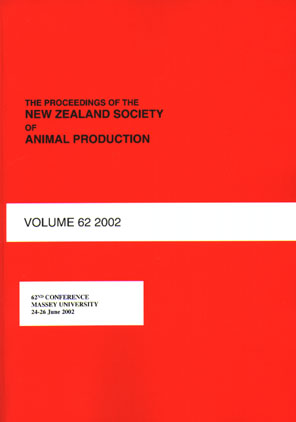Abstract
During the springs of 1990 and 1991 128 recipient cows were artificially inseminated (AI) and 7 days later one embryo was transferred (ET) to induce twinning. Twenty-six per cent (33/128) of recipients returned to oestrus within 25 days of AI. Pregnancy diagnosis at 35 days indicated 12%, 39% and 23% of recipients with 0, 1 or 2 foetuses. The expected calving rate was 63% of which 38% were expected to twin. Only 43% calved but 50% gave birth to twins. The results were similar in both years. These results indicate that the combination of AI and ET result in normal pregnancy rates and higher than expected twin pregnancy rates at about five weeks after AI. However, losses from five weeks to calving are several times higher than expected, and are a major limitation to the achievement of 100% plus calving to one round of treatment. Early pregnancy diagnosis (day 35) may have precipitated such losses.
Proceedings of the New Zealand Society of Animal Production, Volume 53, , 215-217, 1993
| Download Full PDF | BibTEX Citation | Endnote Citation | Search the Proceedings |

This work is licensed under a Creative Commons Attribution-NonCommercial-NoDerivatives 4.0 International License.

